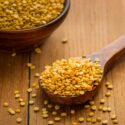Spirulina Blue Food Color: A Natural and Nutritious Option for Food Coloring

Introduction to Spirulina Blue Food Color
In recent years, the demand for natural food coloring has increased due to the growing concern over the adverse effects of synthetic food coloring. Consumers are now more aware of the potential health risks associated with synthetic food colors and are searching for healthier alternatives. This is where spirulina blue food color comes into the picture.
Spirulina is a type of blue-green algae that has been used as a food and dietary supplement for centuries. It is packed with a wide range of nutrients, including protein, vitamins, minerals, and antioxidants. In addition to its health benefits, spirulina is also a natural food coloring that provides a rich blue hue to foods and beverages.
Spirulina blue food color is made from spirulina extract and is a completely natural alternative to synthetic food coloring. It is free from harmful chemicals and preservatives, making it a safe and healthy option for those who are looking to avoid synthetic food coloring.
Benefits of Spirulina Blue Food Color
One of the key benefits of spirulina blue food color is that it is a natural source of antioxidants. Antioxidants are essential for fighting free radicals and protecting the body from damage caused by oxidative stress. They are also important for maintaining good health and preventing chronic diseases.
Another benefit of spirulina blue food color is that it is a natural source of vitamins and minerals. Spirulina is rich in vitamins B1, B2, B3, and B6, as well as minerals such as iron, calcium, and magnesium. These nutrients are essential for maintaining good health and supporting the immune system.
In addition to its health benefits, spirulina blue food color is also a great alternative for those who are looking for a natural food coloring option. It provides a beautiful blue hue to foods and beverages, making it a popular choice for coloring a wide range of products, including candies, cookies, cakes, and drinks.
Spirulina blue food color is also a great option for those who are looking for a food coloring that is easy to use. It is highly concentrated, so a little goes a long way, and it is easy to mix into food and beverage products. In addition, spirulina blue food color is stable and does not fade over time, so you can enjoy the same beautiful blue hue for as long as the product lasts.
Safe and healthy option, free from harmful chemicals and preservatives
Spirulina blue food color is also eco-friendly, as it is made from a sustainable and renewable source. Unlike synthetic food coloring, spirulina is produced using natural methods and does not contribute to environmental degradation. This makes it a great choice for those who are looking to reduce their carbon footprint and make more environmentally conscious choices.
Another benefit of spirulina blue food color is that it is versatile and can be used in a variety of recipes. Whether you’re making a sweet or savory dish, spirulina blue food color can add a beautiful blue hue and a boost of nutrition. It is also suitable for a wide range of dietary restrictions, including vegan, vegetarian, gluten-free, and allergen-free diets.
In addition to its health and environmental benefits, spirulina blue food color is also cost-effective. While synthetic food coloring can be expensive and often requires the use of large quantities to achieve the desired color, spirulina blue food color is highly concentrated and a little goes a long way. This makes it a cost-effective and budget-friendly option for those who are looking to add color to their food and beverage products.
Conclusion
In conclusion, spirulina blue food color is a natural and nutritious option for food coloring. It is free from harmful chemicals and preservatives, making it a safe and healthy choice for those who are looking to avoid synthetic food coloring. In addition, it is a natural source of antioxidants, vitamins, and minerals, making it a great choice for those who are looking to support their health and wellness. If you’re looking for a natural food coloring option, consider spirulina blue food color for your next recipe or food product.
Recommended For You
7 Foods That Kids Need to Avoid During Summers
Webparx
Webparx serves as your ultimate destination for pragmatic, valuable and ingenious solutions aimed at simplifying every facet of your hectic lifestyle.



